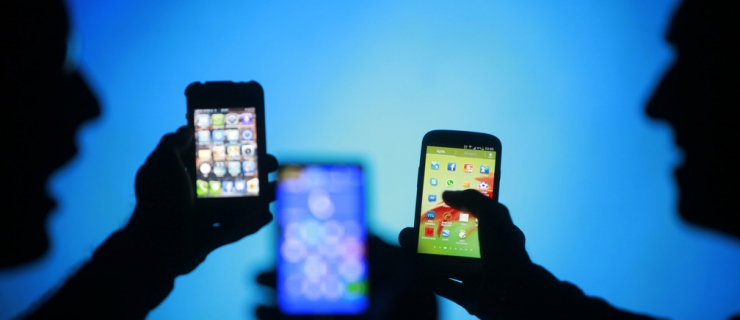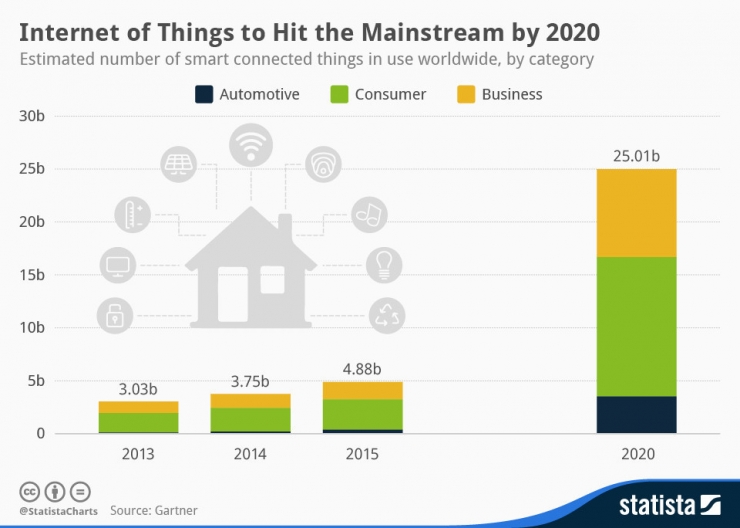
When it comes to sensors, the first thing that comes to mind is wearable devices. Now, wearable devices have been widely spread, Fitbit, Garmin, etc. have been integrated into our lives. What many people do not know is that we can also use sensors to detect tall buildings and bridges in reinforced concrete cities and use them to track the movement of animal insects.
With the rapid development of the Internet of Things, there will be tens of billions of sensor devices integrated into all aspects of our lives in the coming decade. From the industrial sector to the health sector and from the economic sector to the military sector, sensors will enable greater productivity and make life easier. Beautiful.
The following are the values ​​created by the Internet of Things from 2013 to 2020:

However, although the Internet of Things devices are widely used and of great value, these devices have their own application scope and the performance of the devices determines their location, environment and people.
Let AI and Internet of Things combineSo what if we introduce AI to the Internet of Things? With AI, these devices will be able to change the scope of their applications. Just as humans can adapt slowly to unfamiliar environments, even smaller IoT devices can adapt to AI machines.
In terms of smart phones, users can download apps according to their own preferences, upgrade or uninstall apps at any time, and make mobile phones unique.
And if the mobile phone can count our app to learn our preferences? This can automate the personalization process.
But if you don’t express your preferences to the device, will they still know you? Obviously, equipment does not.
At this time, the role of AI is highlighted: it allows the phone to learn faster.
Let devices learn from each otherTwo similar smart phones can learn from each other, they can run their own AI machines, and can share the logic of their own programs to accelerate learning. For example, they can learn from each other how to maintain the battery life.
There are two reasons behind why devices learn from each other. First of all, each mobile phone can learn independently and develop its own genetic material. In evolutionary calculations, this is called the "island model." In the Internet of Things, each device can become its own "island."
In addition, these devices can share what they learned. This will increase the diversity of the gene bank, which is helpful for systems that can learn or evolve. This also means that these devices know how to better adapt to the new environment.
The combination of AI and IoT devices is somewhat similar to animal tracking mechanisms. Sensors can be mounted on leather or metal ear tags on the ears of animals to track wildlife, pets and livestock.
In order to track more accurate information, each device needs to learn the animal's behavioral characteristics (such as species, age, gender, etc.), and these can be performed with the help of AI.

How can the equipment learn from each other when tracking animals? When two animals meet, the Internet of Things devices can share what they learned, so that the two devices can progress to each other and can be applied to other similar animal characteristics.
Let the sensor predict error
The sharing and learning function of the Internet of Things is not only for animals and humans, it can also detect the status of bridges and roads in cities.
In many cases, these devices cannot be networked because of higher costs and longer distances, but they can collect information in place and learn specific patterns of sensor data to predict errors.
Because there are so few mistakes, the information shared with neighboring devices can constitute a larger database to train other devices that may not have encountered errors.
However, when it comes to how to make IoT devices learn from reality, we still have many problems that have yet to be resolved. If the device shares information, will it reveal the privacy of the user? This requires looking at whether this information is of special significance. For example, information containing genetic programs is not shared.
An IoT device also needs to ensure that it continuously performs its tasks while it reacts with the new environment. We need to apply appropriate security controls, such as setting hard limits for devices, specifying what it can learn, and not learning.
Another question is: How does the device determine which nearby device is trustworthy? If a vicious device enters the environment where the device is located, what should the device do? This is a problem that needs to be solved.
Therefore, the combination of AI and the Internet of Things will bring great convenience to our lives. However, since AI is still at a low level, its integration with the Internet of Things is also in its infancy. Although it has great potential, it still needs our research, dao and investigation.
Via:World Economic Forum
Motion Control Sensor is an original part that converts the change of non-electricity (such as speed, pressure) into electric quantity. According to the converted non-electricity, it can be divided into pressure sensor, speed sensor, temperature sensor, etc. It is a measurement, control instrument and Parts and accessories of equipment.
Encoder And Decoder,Encoder For Motor , Encoder In Communication,Encoder Communication
Changchun Guangxing Sensing Technology Co.LTD , https://www.gx-encoder.com